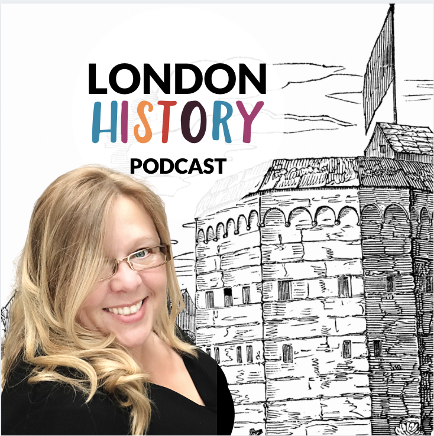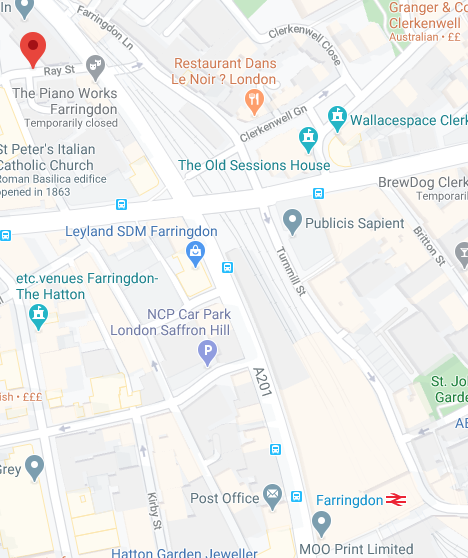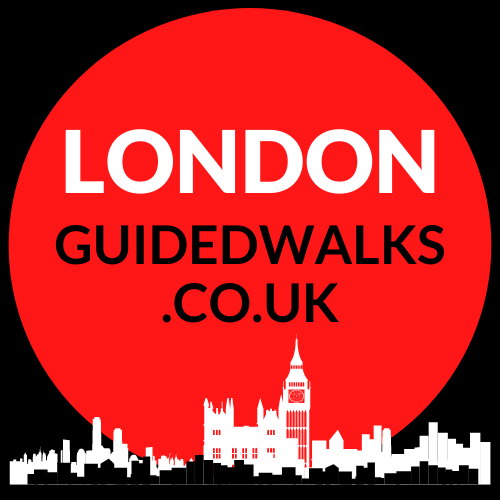
Episode 6: Lost London -Hockley in the Hole
Welcome one, welcome all to Hockley in the Hole!
Join our London tour guide Hazel Baker as we discuss the history of the Hockley in the Hole, a once famed Bear Garden In Clerkenwell, London.
Listen Now: Apple Podcasts | Spotify |Android |RSS
Get our latest episode in your inbox here
Recommended Readings

Support us on Patreon from as little as £5.
Gain access to exclusive content including behind the scenes videos, full transcripts, shout outs and mini videotours!
Show notes:
Hazel: Hello and welcome to London Guided Walks podcast. In the coming episodes, we will be sharing our love and passion for London, its people, places and history in an espresso shot with a splash of personality. For those of you who don't know me, I am Hazel Baker, founder of londonguidedwalks.co.uk, providing guided walks, private tours and treasure hunts to Londoners and visitors alike. And now bringing you a jam-packed podcast during the time of the Coronavirus.

Things we cover:
Welcome one, welcome all to Hockley in the Hole. Most of you, I'm sure won't know exactly where Hockley in the Hole is, or should I say was, because of course, this area no longer exists. Well, not by that name at least. It was a once famed bear garden on Ray Street, but Ray Street doesn't exist either, but Ray Street does. The area lies in the valley of the once free flowing river fleet, which in rainy seasons overflowed, transforming the area into a water clogged Hockley hole. And of course, Hockley is old English and it means muddy field, and hole is dirt and leaves is a pasture or muddy dirty field. So, this is a dirty hole. So, as the name suggests, it sort of had the same kind of reputation. And of course, don't let the name Ray Street fool you either. So, Ray Street is the modern-day name in Clerkenwell for the street that was called Ray Street, and the Victorians renamed that, and Ray Street only appears in 1774. Before that, it was named Hockley in the Hole, and it was named that for hundreds of years.
Now, quite sadly this whole affair is hardly more than a nominal existence now, it has been used in the filming of the movie Paddington, for a few seconds at least. But really not much else is there, other than the late Victorian pub, which is now called the Coach. But prior to that, for hundreds of years, there was a pub called the Coach and Horses. In 1661, the year of Charles II’s coronation, there were 21 houses rated to the poor here, and its conditions certainly doesn't seem to change in the next hundred years. In 1756, the old London newspaper, the public advisor, describes the neglected state that Hockley in the Hole is not only very narrow, ruinous and full of great holes, but the old houses joining the roadside in Hockley for once of inhabitants or owners, are daily tumbling down. So, the area seems to have been very well named indeed; it was both physically and morally low conditioned area.
A local poet by the name of Ned Ward ironically mentions sweet St. James's Clerkenwell in 1717. "All that stinks that rise together from Hockley Hole in sultry weather."
Alexander Pope is regarded as one of the greatest English poets and the foremost poets in the 18th century, and he refers to the area in his Dunciad in 1726, "This mess tossed up of Hockley Hole and Whites, where Dukes and butchers to reef my crown at once the bear and fiddle of the town."
The bear garden was originally built as a blood sport arena. Bear and bull baiting were major spectator sports, and there were several purpose-built arenas in London and specifically designed to house these events.
So, what did a bear garden look like? I've not seen any illustrations of the bear garden in Hockley in the Hole, but I have seen those for the one on bank side in Sussex so, I imagine them to be quite similar.
In order to drum up business for bull or bear baiting, it was customary to parade the animals through the streets of London. The poet grey in his trivia or the art of walking the streets of London describes it thus, "Went through the streets with slow and solemn air, led by the nostril, walks the muzzled bear, behind him moves majestically dull, the pride of Hockley Hole, the surely bull. Learn hence the periods of the week to name Mondays and Thursdays are the days of game.".
It wasn't just man and beasts who had the action, in 1722, two women had their turn too. One, Elizabeth Wilkinson of Clerkenwell challenged Hannah Highfield of New Gate Market for fisticuffs. "Hi, Elizabeth Wilkinson of Clerkenwell, I've had some words with Hannah Highfield and requiring satisfaction, do invite her to meet me on the stage and box with me for three guineas. Each woman, holding half a crown in each hand and the first woman that drops her money to lose the battle.". And of course, holding half a crown in each hand was to prevent the women from scratching their opponents’ eyes out. And Hannah Highfield responded to Elizabeth Wilkinson's invitation, "Hi, Hannah Highfield of New Gate Market, hearing of the resolution of Elizabeth will not fail to give her more blows than words, desiring own blows, and from her, no favour.". And so, in June 1722, the two women were dressed for the purpose with closed jackets, short petticoats, Holland drawers, white stockings and pumps. They were ready to settle their differences.
According to the London journal, June 1722, they did indeed get onstage for the first time, they maintained the battle with great valour for a long time, and to no small satisfaction of the spectators. I'm sure men from every class enjoyed this spectacle, especially since these women are going against the accepted behaviour of the bearer of sex.
There was another popular blood sport at Hockley in the Hole in the 1700's too, and that was cockfighting.
Several discoveries have been found at the Old Coaching Inn pub, which is now a late Victorian building. So, this is the earlier version. Mr. Reynolds, who was the father of the proprietor at the time, found a large brass colour with the engraving, "Mr. Francis Paul of Park hold Derbyshire of 1702.". It is said that several of the buildings were believed to have had basements leading to the river in order for people to make a quick escape.
The attractiveness of Hockley in the Hole declined after 1834 with the introduction of the large animals’ act, therefore preventing blood sports such as bull and bear baiting. Now, that wasn't the end of Hockley in the Hole, it just took on a new lease of life. And what did that look like? Well, it was never going to be positive, you can hear more about the area from 1837 throughout the Victorian period on my Oliver Twist Walk where we venture back into 1837 and walk the route that Dickens describes in chapter eight. The Artful Dodger has now met Oliver Twist, and has invited him to introduce him to a gentleman who can provide him with food and lodgings and not want any rent. And so, we follow the route that little Oliver takes into the depths of London and of course, he has to go to Hockley in the Hole.
Well, that's all for today's session on Hockley in the Hole, I hope you found it informative and also enjoyable. Big thanks to all those who have sent me lovely messages of encouragement for doing this podcast. It is really, really appreciated. Don't forget if you have any suggestions for future episodes, or you want to join me on a podcast, and share your memories or your knowledge of London, then please visit londonguidedwalks.co.uk/podcast and get in touch. And if you can't wait until our next episode, we have literally hundreds of London centric blog posts on our blog, londonguidedwalks.co.uk/blog, and we'll see you very soon.
Other Episodes
046 Beer, The Bard & Historic Buildings of Bankside
045 Drawing London's Buildings
042 John Julius Angerstein: The Man Behind the National Gallery
041 London's Medieval Friaries
040 Charles Dickens in Greenwich
038 The Black Death: London's First Plague
037 Bridgerton & Regency London
034 London's Old Shops - Food & Drink
031 Abandoned London Underground Stations
030 Quirky Street Names - Little Britain
029 The Harp maker of Fitzrovia
024 The Walbrook in Roman London
021 London Area Names - Animal Edition
020 The Great Fire of London - How It Began
017 The Proms & The Royal Albert Hall
016 Women in 1920s London (From Cowgirl to Congress)
014 Postcards From London's Past
013 London Statues: Medical Women
012 The Old Operating Theatre Museum
011 London's Coffeehouses and Commerce
009 Music Halls and Cabaret - from yesterday to today
008 The Monument to the Great Fire of London
006 Hockley in the Hole Clerkenwell
Some links contain affiliate links, which means that if you click on one of the product links, we receive a small commission. This helps support our free podcast. Thank you for the support!
Copyright London Guided Walks and Treasure Hunts
